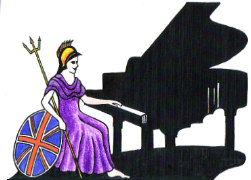Teachers, Accompanists and Piano Entertainers in the UK

UK Piano Page

11 Bishop Street
Londonderry, County Londonderry BT48 6PL
Northern Ireland
Henderson Music are Ireland's leading supplier of
The Old Dairy
21 Dowland Road
Limavady, County Derry / Londonderry BT49 OHP
Northern Ireland
Limavady pianos service repair and restore pianos
5 - 8 Chester Court
Albany Street
Camden Town, London NW1 4BU
England
For 100 years Markson Pianos have been one of the
Unit 17 Chaucer Industrial Park, Watery Lane
Sevenoaks
Kemsing, Kent TN15 6PJ
England
53 High Street
Berkhamsted, Hertfordshire HP43QH
England
We know that when it comes to pianos, one size
Music Festival for performers and guests Our 10th
18-06-2022 12:30PM
The Morecambe Bay Piano Group was set up to extend
11-12-2021 01:00PM
The Morecambe Bay Piano Group was set up to extend
08-01-2022 01:00PM
The Morecambe Bay Piano Group was set up to extend
12-02-2022 01:00PM